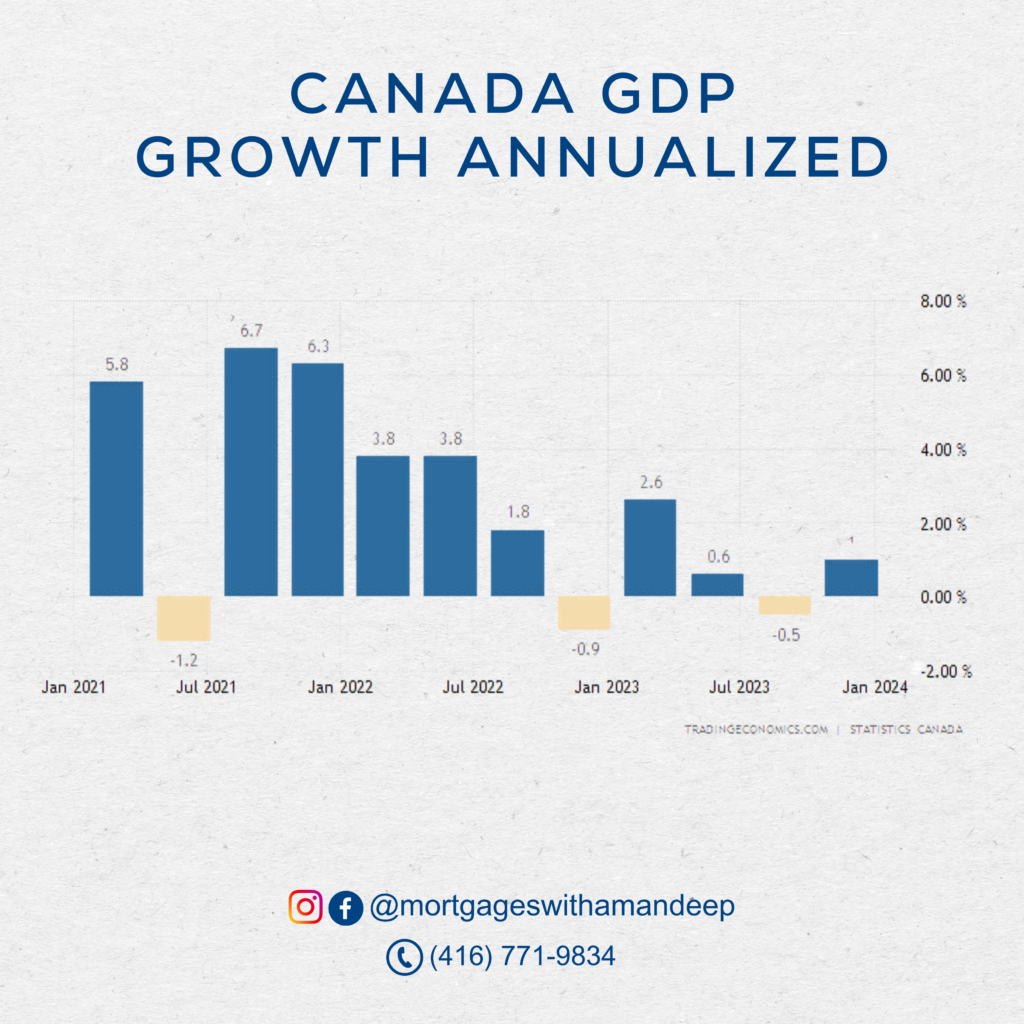In the intricate dance of economic indicators, Canada’s gross domestic product (GDP) showed a modest uptick of 0.2% in the fourth quarter of 2023, following a slight decline in the previous quarter. This marginal growth, albeit modest, plays a pivotal role in steering the narrative away from recessionary concerns.

Balancing Act: Key Drivers of GDP
Examining the key drivers of this GDP movement unveils a nuanced picture. The increase in exports, particularly in crude oil and travel services, buoyed economic growth, reflecting the resilience of certain sectors. Concurrently, a decrease in imports, coupled with a marginal rise in household spending, contributed to this delicate balance.
Challenges Amidst Resilience: Business Investment and Housing Market
Despite these positive indicators, the shadows of uncertainty loom large. Business investment, a cornerstone of economic vitality, witnessed a decline for the sixth time in seven quarters. Investment in non-residential structures and machinery and equipment faltered, reflecting a cautious sentiment amidst economic headwinds.
The housing market, often a barometer of economic health, echoed a similar sentiment. Housing investment declined, mirroring a subdued resale market despite upticks in new construction and renovations. This trend underscores the intricacies of supply and demand dynamics, coupled with evolving consumer preferences.
Eyes on the Central Bank: Implications of Monetary Policy
Amidst these fluctuations, the upcoming interest rate announcement by the Bank of Canada assumes heightened significance. With all eyes on the central bank, the decision-making process becomes a delicate balancing act. How will policymakers navigate the terrain of conflicting signals, weighing the need for stimulus against inflationary pressures?
International Dynamics: Terms of Trade and Global Competitiveness
The terms of trade, a vital metric of international competitiveness, witnessed a decline, adding another layer of complexity to the economic landscape. Export prices trailed behind import prices, underscoring the challenges posed by global market dynamics.
Labor Markets and Household Resilience
Compensation of employees, a linchpin of household income, grew at a slower pace, reflecting nuanced trends across industries. While certain sectors witnessed robust growth, others grappled with labor market disruptions, accentuated by localized factors such as strike actions.
Meanwhile, household net saving remained relatively stable, offering a semblance of resilience amidst economic flux. However, the trajectory of property income payments underscores the varying impacts of monetary policy on different segments of society, highlighting the imperative of inclusive economic strategies.
Corporate Realities: Sectoral Dynamics
On the corporate front, while non-financial sectors exhibited growth in operating surplus, the financial sector faced headwinds stemming from narrowing net interest margins. These divergent trends underscore the sectoral nuances shaping Canada’s economic narrative.
Charting the Course Forward
As Canada navigates the complexities of its economic landscape, the path forward remains fraught with uncertainties. The Bank of Canada’s forthcoming decision holds the key to navigating these turbulent waters, with a delicate balance between supporting growth and managing inflationary pressures. In this intricate dance of economic indicators, each move carries profound implications for the nation’s economic future.